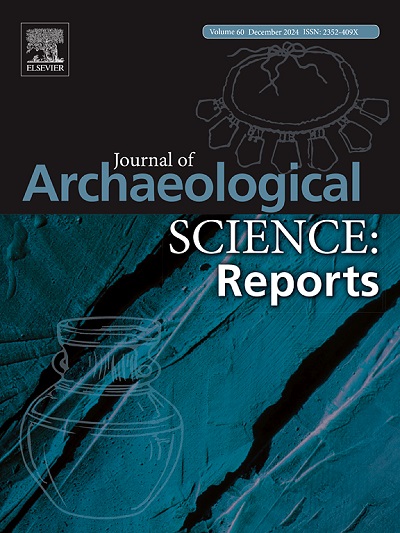Microscope agnosticism and the characterization of sedimentary abrasion of flint stone tools
IF 1.5
2区 历史学
0 ARCHAEOLOGY
引用次数: 0
Abstract
The surface of lithic stone tools from Paleolithic archaeological sites can undergo a range of different postdepositional alterations, including sedimentary erosion induced by water displacement or wind. The surface of flint artifacts can reflect these alterations as changes in texture. Microscopic analyses and grayscale images can be employed to obtain quantitative data to help determine the degree to which the surfaces of flint stone tools have been altered. However, surface quantitative values depend directly on the image capturing system of each microscope. This raises the question of whether the quantitative values are actually capturing the evolution of the surface, whether they are dependent on the type of microscope and its image capturing system, and whether the detection of the degree of abrasion might vary depending on the type of microscope. The present work sought to determine whether data extracted from images from two different microscopes point to the same trends in surface change due to postdepositional alterations. Surface photographs of a sample of 25 flakes were taken using a Dino-Lite Edge 3.0 AM73915MZT and a 3D Optical Profiler Sensofar S neox 090. These flakes represented three different stages of alteration (fresh, ten hours of experimentally-induced sedimentary erosion, and geological neocortex). Results from grayscale images indicate that, despite yielding different numeric ranges, the quantitative values of the images from both types of microscope reflect the same trends in surface change. The classification accuracy of the three stages of erosion did not vary between microscopes.
显微镜不可知论与燧石石器沉积磨损的特征描述
旧石器时代考古遗址出土的石器表面会发生一系列不同的沉积后变化,包括水流或风力引起的沉积侵蚀。燧石器物的表面可以通过纹理的变化反映出这些变化。显微分析和灰度图像可用于获取定量数据,帮助确定燧石石器表面的改变程度。然而,表面定量值直接取决于每台显微镜的图像捕捉系统。这就提出了一个问题:定量值是否真正捕捉到了表面的演变,是否取决于显微镜的类型及其图像捕捉系统,以及磨损程度的检测是否会因显微镜的类型而有所不同。本研究试图确定从两种不同显微镜的图像中提取的数据是否指向相同的沉积后改变导致的表面变化趋势。我们使用 Dino-Lite Edge 3.0 AM73915MZT 和 3D 光学轮廓仪 Sensofar S neox 090 拍摄了 25 个薄片样本的表面照片。这些薄片代表了三个不同的蚀变阶段(新鲜、实验诱发的十小时沉积侵蚀和地质新皮质)。灰度图像的结果表明,尽管产生的数值范围不同,但两种显微镜图像的定量值反映了相同的表面变化趋势。不同显微镜对三个侵蚀阶段的分类准确性没有差异。
本文章由计算机程序翻译,如有差异,请以英文原文为准。
求助全文
约1分钟内获得全文
求助全文
来源期刊

Journal of Archaeological Science-Reports
ARCHAEOLOGY-
CiteScore
3.10
自引率
12.50%
发文量
405
期刊介绍:
Journal of Archaeological Science: Reports is aimed at archaeologists and scientists engaged with the application of scientific techniques and methodologies to all areas of archaeology. The journal focuses on the results of the application of scientific methods to archaeological problems and debates. It will provide a forum for reviews and scientific debate of issues in scientific archaeology and their impact in the wider subject. Journal of Archaeological Science: Reports will publish papers of excellent archaeological science, with regional or wider interest. This will include case studies, reviews and short papers where an established scientific technique sheds light on archaeological questions and debates.
 求助内容:
求助内容: 应助结果提醒方式:
应助结果提醒方式:


